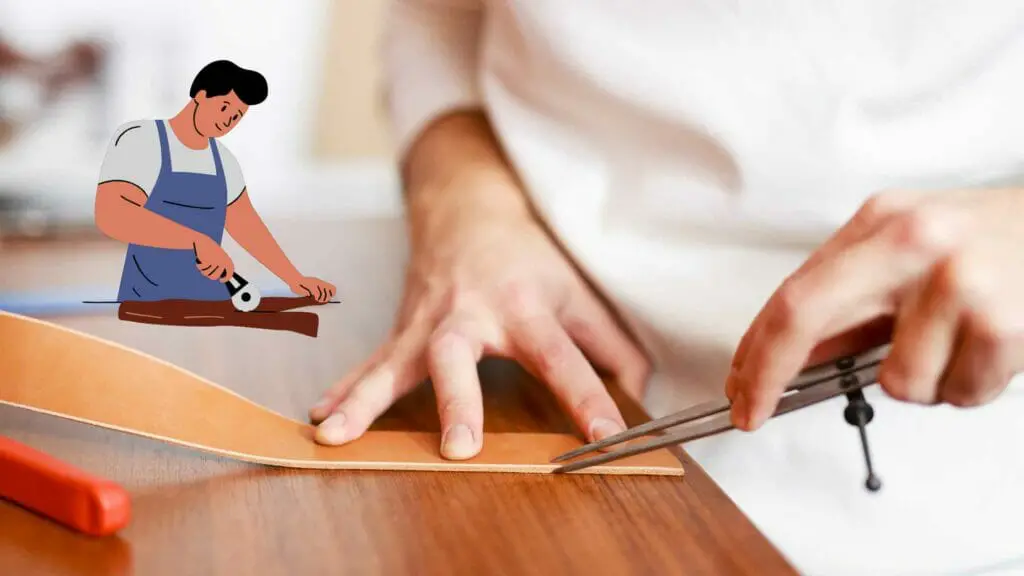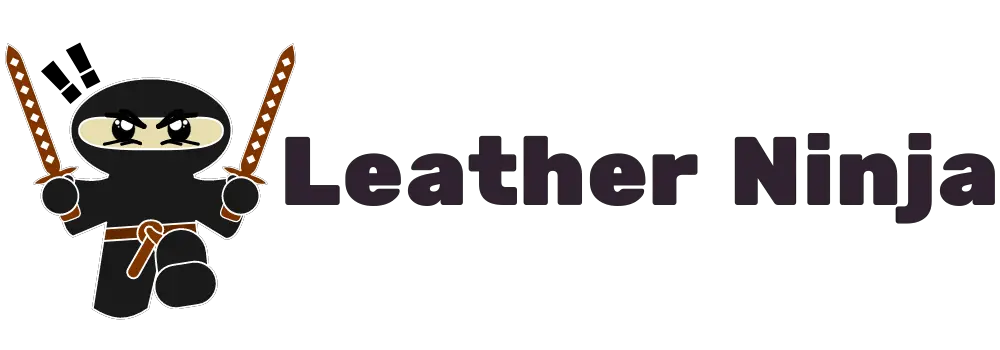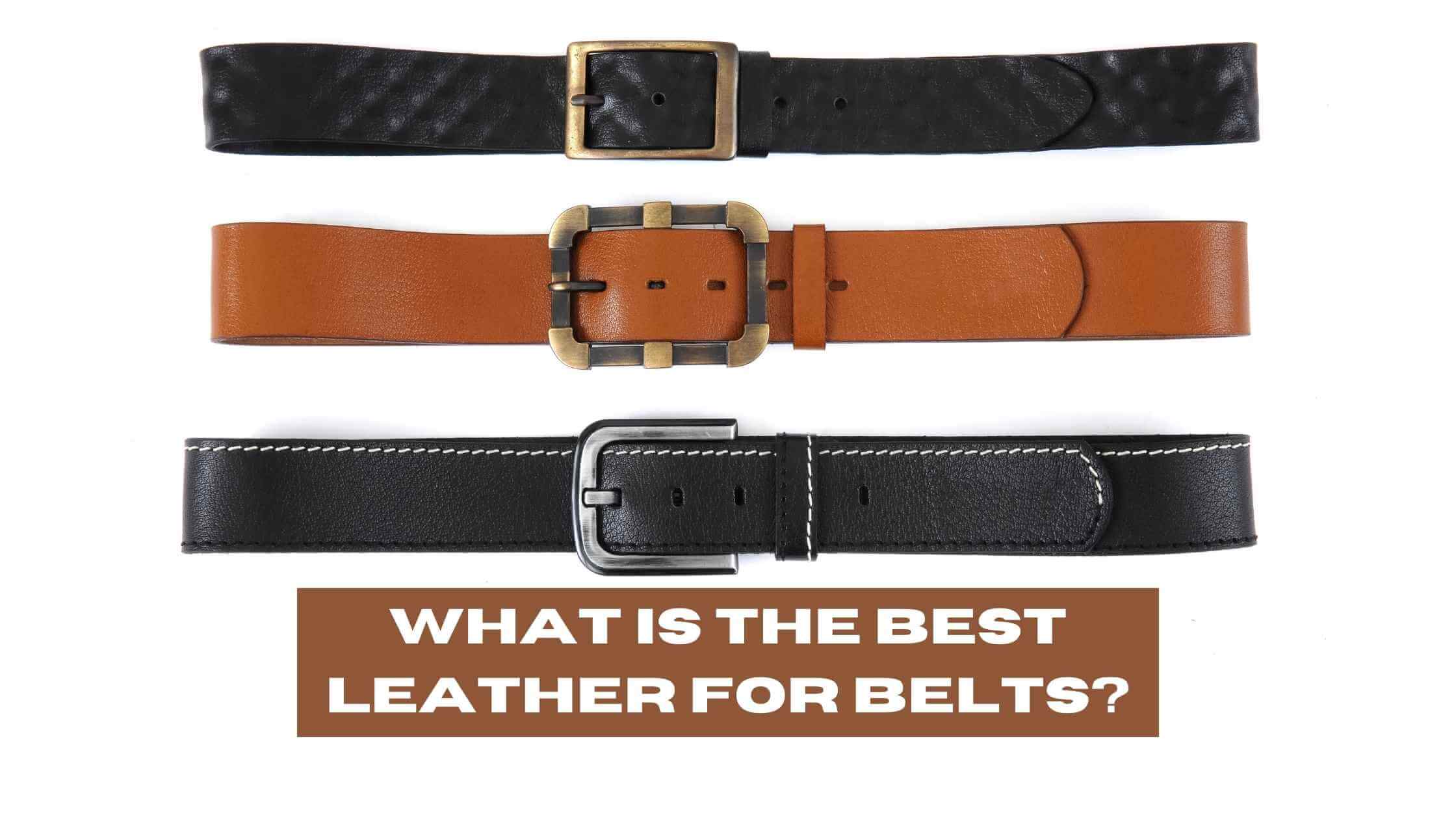Did you know that there is a specific part of animal skin from which your leather belt is made? Read on to know more about what is the best leather for belts.
The best leather for belts is the double butt cut (or the bend cut) which is exactly what it sounds like — a cut that covers the spine, upper leg, and butt area of the cowhide. This particular cut of leather is the thickest part of the hide and also the firmest part. It means that the leather will be consistent and even. As a bonus, using this leather cut also means you’ll have less waste from the cowhide in this area.
What is the best leather for belts?
As you already know, the bend cut will be great for your leather belt. I’ll go into more detail on that later, but let’s take a moment to understand why the right belt material matters and how leather crafters can pick the right part of the hide.
Firstly, different kinds of belts require different leather thicknesses. The best example I’ve found is the difference between a formal belt (decorative, mainly) and a gun belt (purely functional).
If you ever put these two types of belts side by side, you’ll see just how different they are in thickness. Yet, both are perfectly created for their actual uses, and they’d be ineffective if they switched places! Pretty neat when you think of it that way, right?
What is the best grade of leather for a belt?
As you might already know, as a leather lover such as myself, not all grades of leather will give you the same output. When you need leather for a casual belt, you’ll want to go with full-grain leather. This is unprocessed leather that keeps the entire grain intact. This creates a strong and durable leather for you to rely on as your base!
Best leather parts for a belt
As I hinted earlier, let’s take a closer look at the leather parts and cuts to understand why the hilariously named double butt cut is going to be your best choice for a leather belt.
This bend cut has the thickness, consistency, and overall firmness you’ll want in your classic leather belt. Another way to think about that is to see it as the most “dependable” part of the leather simply because it has to take the most abuse. Plus, if you go with full-grain leather, you’ll get all of the characteristics of the skin’s natural imperfections!
You can also consider going with a side cut of leather for belts. These are sometimes used because they offer a strength worth noting. However, the side cut stretches from the neck to the legs and often affects the belly. Since this area stretches and changes a lot, it means that the leather’s native thickness will be inconsistent, and the leather itself stretches so much at specific points that it might offer too much stretch in the belly portion of the leather.
Another cut you can use in specific situations is the square shoulder. This is the cut that takes on the side and shoulder blades (basically the higher end of the bend cut that I’ve been talking about). This isn’t used often because it needs to come from what’s called a “square cow.”
Unfortunately, for its cool factor, this is not a cow that is literally square-shaped. Instead, it’s a symmetrical cow in its shoulder, which is also commonly referred to as, you guessed it, square. These cows must also be very heavy and solidly built to produce the right kind of hide.
In essence, they’re rare and difficult to produce. So, the bend cut is the best choice in its consistency in the leather and the cow population itself!

Best leather thickness for belts
When it comes to leather thickness in and of itself, you’ll want to go with a belt between ⅛ and 9/64 inches (0.3-0.35 cm). This is considered the best strength for a casual belt, but it still won’t be so stiff or uncomfortable that you won’t want to wear it. Dressy belts can be thinner and tactical belts can be thicker.
As far as thickness for its actual face (that you see), Art of Manliness explains that most belts are between 1-1.5 inches (2.50-3.8 cm) wide.
Is cow leather good for belts?
Cow leather is a type of bovine leather. If you’re curious about what bovine leather is, you can learn all about it here. This specific kind of leather is well-loved for its affordability and ease of access. It’s also considered smooth, durable, and flexible enough to make great belts.
Vegetable-tanned leather is preferred since it’s kinder on the environment and also kinder on the skin. Since belts get a lot of use, you won’t necessarily want to have chemicals close to you.
How can you tell the quality of a leather belt?
If you’re in a store looking at genuine leather belts, you want to know that you’re getting a good one for your money, right? When researching belts and then picking the final ones, focus on the leather grain, the leather type, and the thickness. Don’t forget to narrow your focus on the type of belt you’re going for, too, since formal and causal belts meet different needs, as we discussed.
How can I make my leather belt last longer?
In all seriousness, a good-quality leather belt is a serious investment. Since money doesn’t grow on trees, you’ll want to ensure you get the best years out of it possible, right? I’ve got some tips to help you out with just that!
Firstly, you’ll want to treat your leather belt just like any other piece of leather. You’ll want to dust it off regularly, clean it regularly, and condition and protect it, too. Invest in the right cleaning cloths and different cleaning products to take advantage of proper leather care!
As strange as it may sound, the next thing is not to wear it too often. The whole point of getting a leather belt is to wear it, right? However, wearing your leather too often stresses all its high-pressure points and can break down your leather much faster. Give it a rest day between wears and uses so you don’t overwork the leather.
You’ll also want to pick the right size belt. Leather belts look their best when you use a hole in the middle of the belt. If you wear one just at its end, or you wear one where you are on the inner-most hole, it doesn’t really deliver its presence. If you don’t like how your belt works, you won’t wear it as much as your investment deserves.
Lastly, hang your belt when you store it. Coiling up or shoving it in a drawer taxes the leather. Hang it on a hanger or a purpose-designed belt hook. It’ll also give it room to breathe and air out odors!
Are leather belts formal?
Yes, leather belts are considered formal, even in a “suit and tie” environment. ThreadCurve explains that leather belts are dressier than other materials, so you’ll not want to pass up on an opportunity to wear your prestigious leather belt to a black-tie event!
Your best leather belt is going to come from a double butt cut from the rear end and side of a cow. This is thick, strong, and even in its stretch compared to other parts of the cow. It also creates the least amount of wastage, allowing leather producers to be more profitable and ethical!
Know someone who will find this part of cow trivia interesting? Share it with them and enjoy some laughs together!

